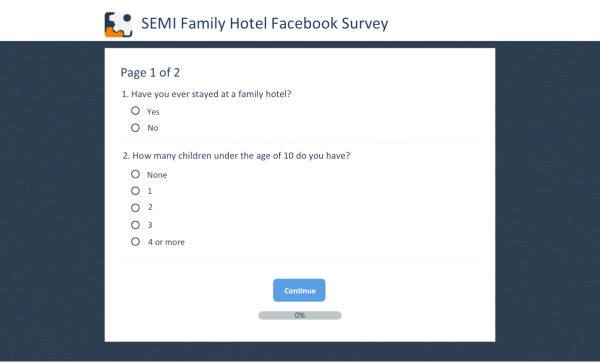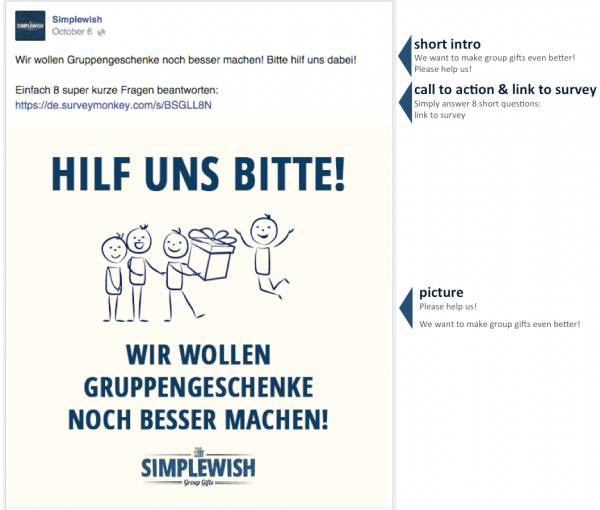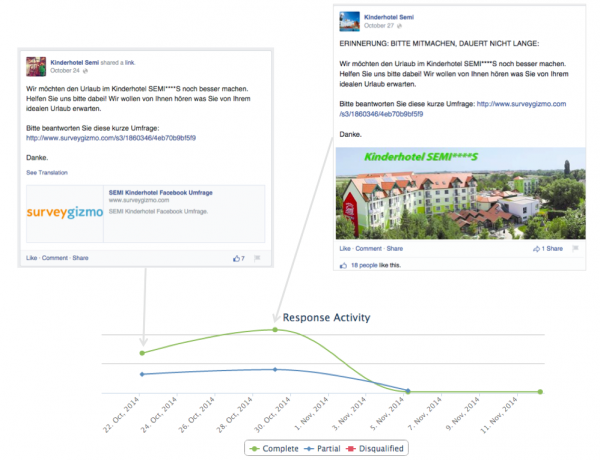Shhh! An Unheard-of Technique to Collect Feedback from Your Prospects on Facebook

December 16, 2014
During our last few client projects we noticed that many companies have very lively Facebook pages with a big fan base. In fact, there is often more activity on the Facebook page than on the company website.
We decided to take advantage of this and include Facebook fans in our user research strategy. At first, we were skeptical about the quality of the feedback we would get from Facebook respondents, but several test runs proved us wrong. The feedback turned out to be excellent. This surprised us and might explain why not many companies use this easy technique.
So, why do we like running surveys on Facebook?
It’s a great way to survey people interested in your brand.
Most of your Facebook fans are not customers, but they have already demonstrated some interest in your brand by liking your page — that makes them the perfect targets if you want to learn more about your prospects.
It’s easy to quickly get a large number of respondents.
Facebook users spend about 21 minutes a day on the site. Smartphone users check Facebook 14 times a day. This means that there is a large pool of active people who are readily available to take your survey. That’s why you’ll get results very quickly. We typically have tons of responses within 3 days of posting a survey.
It only takes a few minutes to set them up, and it’s free.
Implementing the survey takes only a couple of minutes and can be done at no cost if you use free survey or polling tools.
This is how we do it…
Five minutes is all you need to set up a survey on Facebook.
1. Start by defining the questions you want to ask
Begin with an easy entry question to get respondents in the survey mood and avoid scaring them at the start. If you are looking for feedback only from a specific group of prospects, add a validation question.

We started this survey for a family hotel with an easy entry question, followed by a question to determine if the respondent belongs to the key target group of the hotel (i.e., families with kids under a certain age).
Make sure to mainly ask open questions. Yes, this makes analyzing the feedback way more time-consuming, but trust us that the insights you get will make it worthwhile. Stay tuned because we are about to write a blog post with an example demonstrating the power of open-ended questions.
2. Set up the survey
Now that you have defined the questions, it’s time to set up the survey.
You can either use one of several Facebook-specific polling solutions or work with general online survey tools. To give us more flexibility and accommodate our special needs (skip logic, adding pictures to questions, etc.), we decided to use non-Facebook-specific survey tools like SurveyMonkey and SurveyGizmo. So far, this has worked extremely well for us.
3. Post the survey on Facebook (and don’t forget to add a picture)
Once the survey is set up you just need to post it on Facebook. In our case, we posted a small introduction text with a call to action and a link to the survey. Make sure to always include a picture — you’ll get many more responses like this.

Example of Facebook post inviting fans to participate in a survey. A short intro, call to action, link to the survey, and a picture — that’s it.
A recent survey for a hotel illustrates how vital a picture is to obtaining responses. By mistake, the first post was made without a picture.

In most cases a second post reminding Facebook fans to participate in a survey does not yield many additional responses. However in our example responses peaked with the reminder due to the added picture (in the post shown above on the right-hand side).
3 final tips for asking the right questions
1. Don’t be shy – Surprisingly, we discovered that you can ask many questions. It turns out respondents are very patient. We typically have no problem getting answers to 10 or even more questions.
2. Make your surveys more responsive – Show and hide questions based on previous responses to make them as relevant as possible to each respondent and avoid survey abandonment.
3. Keep the communication going – Give the option to leave an email address so you can further engage with them, either because they asked you to (e.g., mentioning in their feedback that they would like you to get in touch with them) or because you’d like to follow up with them on feedback they gave.
What’s next?
Sign up for our newsletter to get more tips like this.
Contact us, if you’d like us to help find out what is going on in your users’ or prospects’ minds.